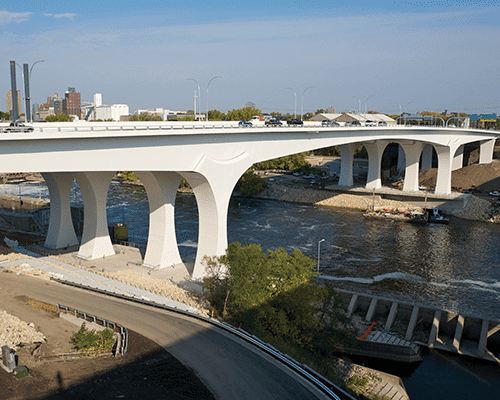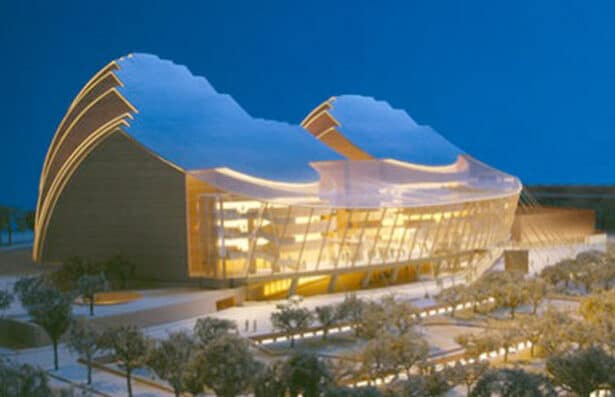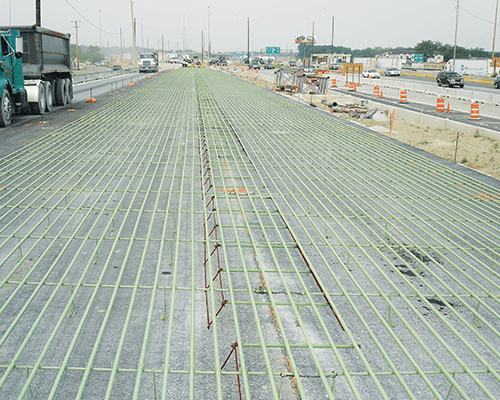Applications
Epoxy-Coated Steel Reinforcing Bars (rebar) may be used in any concrete subjected to corrosive conditions. These may include exposure to deicing salts or marine waters.

Bridges
In 2013, there were over 80,000 bridges in the National Bridge Inventory that contained epoxy coated steel rebar. For over 40 years, Epoxy-Coated Steel Reinforcing Bars (rebar) has demonstrated that it can cost-effectively improve the life-cycle costs of concrete bridge decks.

Buildings
A substantial amount of epoxy-coated bars are used to protect reinforcing bars in buildings. Although epoxy-coated steel was used in bridge decks as early as 1973, it was not until the 1980’s that epoxy-coated bars gained popularity in other structures. Now, tens of thousands of buildings, bridges, wharfs and other structures contain Epoxy-Coated Steel Reinforcing Bars (rebar).

Marine Structures
Corrosion of concrete reinforcement has always been a problem in marine structures. Epoxy-Coated Steel Reinforcing Bars (rebar) has demonstrated over the past 40 years that it can help reduce the damage caused by corrosion.

Pavements
Epoxy-Coated Steel Reinforcing Bars (rebar) may be used in continuously reinforced concrete pavements (CRCP).
Epoxy-coated dowel bars are frequently used in jointed pavements. In 2005, a survey of 33 transportation agencies revealed that 26 of these used epoxy-coated dowels.

Parking Structures
At least $600 million is spent yearly to repair parking decks in the U.S. This damage is primarily caused by deicing salts carried on cars and left in the garage during winter.
Epoxy-Coated Steel Reinforcing Bars (rebar) can protect these structures against corrosion and costly damage.

Repair
Epoxy-Coated Steel Reinforcing Bars (rebar) has been used to supplement existing steel reinforcing bars during repair. These coated bars do not provide a good cathode, thus reducing the risk of “ring anode” corrosion surrounding repair areas.